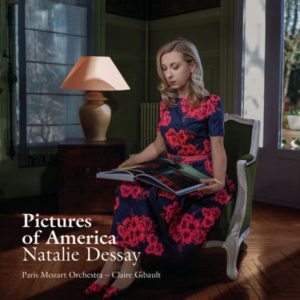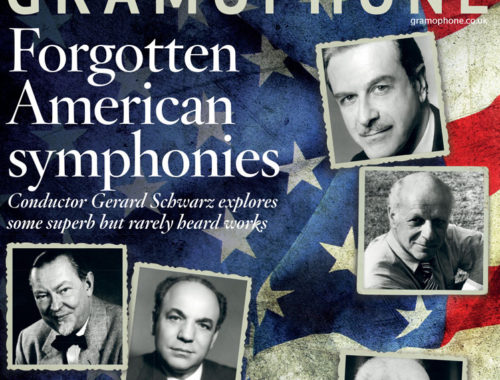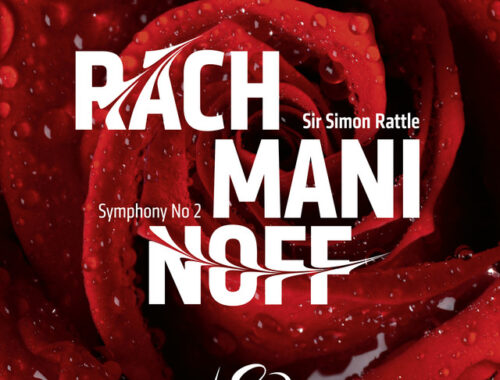GRAMOPHONE Review: Natalie Dessay – Pictures of America Paris Mozart Orchestra/Gibault
 Anyone who has ever seen Natalie Dessay on the stage will know what an accomplished actress she is. It is that which has put flesh on her singing and enriched her operatic career. And now a new phase begins. There is talk of films, of straight acting roles – and maybe even adventures at the opposite end of the musical theatre spectrum. Cue the American Songbook and – in this highly unusual debut disc for Sony – a fascination with the painter who effectively took snapshots of the American Dream at its most enigmatic.
Anyone who has ever seen Natalie Dessay on the stage will know what an accomplished actress she is. It is that which has put flesh on her singing and enriched her operatic career. And now a new phase begins. There is talk of films, of straight acting roles – and maybe even adventures at the opposite end of the musical theatre spectrum. Cue the American Songbook and – in this highly unusual debut disc for Sony – a fascination with the painter who effectively took snapshots of the American Dream at its most enigmatic.
The entire two-disc set is inspired by Hopper: in the first he is suggested by songs, in the second composer Graciane Finzi underscores the words of poet Claude Esteban as he seeks to investigate the stories behind the images. Five different arrangers are entrusted the songs – one or two more familiar than others, the Sondheim and Bernstein now iconic, and against an intimate yet luxuriant texture of strings – the Paris Mozart Orchestra – Dessay finds a new way of singing born of quiet conversations in private rooms, a sound she hopes will “whisper into the listener’s ear”. She is as good as her word. But a little whispering goes a long way.
The problem I have with the song performances is that the confidential tone – and indeed the colour of the arrangements – is too unvaried. Even musical theatre numbers like “I Feel Pretty” and (how unlikely is this?) “There’s No Business Like Show Business” kind of purr at you through the harmonically lush gift wrapping. Actually the former, my least favourite song from West Side Story, is, I’ll admit, made a deal more interesting by virtue of the rhythmic and harmonic subversions. It made me smile. But “Send in the Clowns”, whilst perfect for Dessay and the ethos of this disc, has too much going on, too much “movement”, in the arrangement. The sparer the better in this number. It’s just a bit rich for my blood.
Of the show songs (and Broadway aficionados should be wary) “On a Clear Day” is possessed of a mystique entirely in keeping with the clairvoyant character which drives the piece – and the repetition of “Ever more….Ever more…” at the close (echoes of Mahler’s Das Lied) gives it a haunting perspective. I also admire the way Dessay keeps it simple and avoids those jazz inflected vocal mannerisms which could so easily have found their way into her new found style, straddling as it does a path somewhere between classical and jazz. On the other hand, a great number like “Something’s Coming” (from West Side) goes for absolutely nothing, its restless anticipation and euphoria muted to extinction.
For me the most successful track is Bergman and Kellaway’s “A Place That You Want To Call Home” with its gorgeous reassuring “homey” quality. The pairing of “I Keep Going Back To Joes” and “In My Solitude” works well, too – the wee small hours bluesy tone suits the presentation (rather like the Hopper that inspired the choice and which is reproduced, along with all the others, in the booklet). But – and it’s a big “but” – the overriding tone (both vocal and instrumental) is uniform, the arrangements (however lovely) drenching the songs (like too much sauce) in an all-purpose melancholia.
The Hopper “impressions” on the other disc have Dessay speaking (in her beautiful and sexy French) the fanciful stories by poet Claude Esteban between or over Graziane Linzi’s music which in turn behaves like filmic underscoring and is sometimes spookily redolent of Bernard Herrmann’s all-strings scoring of Hitchcock’s Psycho – especially fitting as one of the chosen paintings “House By The Railroad” looks like it might once have been occupied by Mrs Bates. But I cannot comprehend why Sony have not included translations of Esteban’s texts? Unless you are a fluent French speaker the whole exercise is rendered meaningless. I for one am intrigued by the stories Esteban has fashioned around Hopper’s images – but my French is too basic to give more than an impression. For sure the sound of the words (and Dessay’s enunciation of them) are evocative in themselves – but did she really want us to go away none the wiser as to Esteban’s “detective” work?Samuel Barber’s celebrated Adagio (and I’ve heard more intense performances than this one) is offered as a musical manifestation of Hopper’s self-portrait – a slightly odd pay-off to this strange and moody confection. Fans of Dessay and seekers of the unusual will want this; lovers of the American Songbook and/or Hopper’s art should approach with caution.
You May Also Like

GRAMOPHONE: From Where I Sit – August 2019
14/08/2019
Michael Ball: Voice of the People
26/11/2020